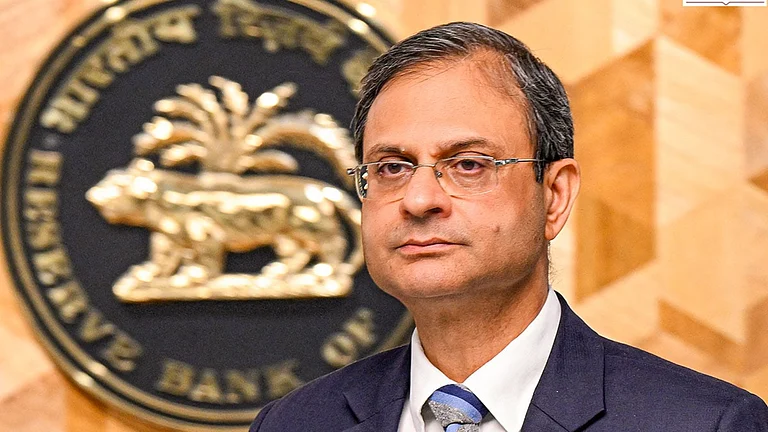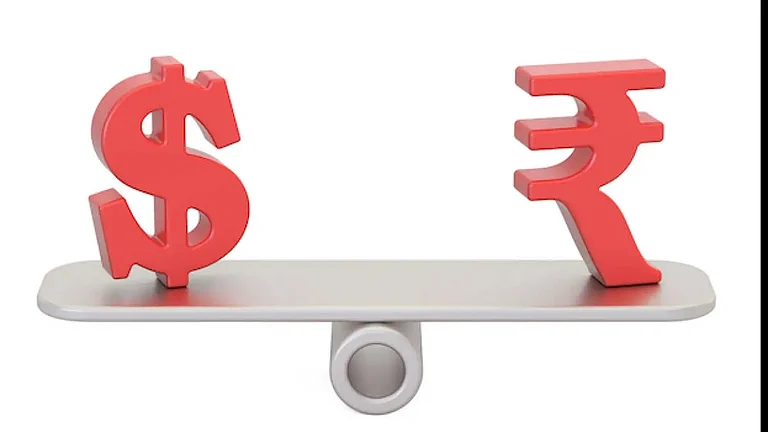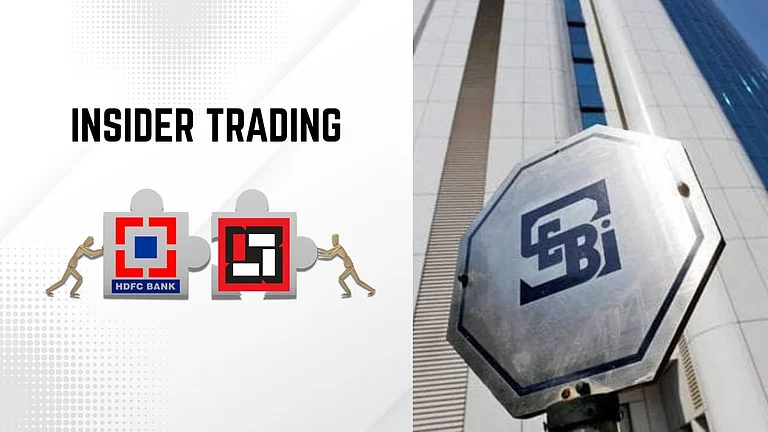
Summary of this article
Several factors helped the Sensex and Nifty in rebounding from the day's lows.
Factors such as hopes of ongoing trade negotiations, easing crude oil prices and recovery in the rupee helped the indices rebound.
The Sensex and Nifty ended flat with a negative bias on July 31 paring the gains the indices made earlier today.
After opening on a weak note, the Sensex and the Nifty declined significantly to intraday lows as the market reacted to the announcement of tariffs on India. US President Donald Trump has imposed 25 per cent tariffs on imports from India to the US. The 30-share Sensex slipped 1 per cent or 786.71 points to an intraday low of 80,695.15. On the other hand the Nifty 50 also fell nearly 1 per cent or 220.05 points to 24,635. However the indices managed to rebound from their lows before the market closed.
The Nifty gained 0.4 per cent to an intraday high at 24,956.5 levels and the Sensex surged 0.39 per cent to an intraday high at 81,803.27 levels. The Nifty rebounded by 1.3 per cent from its intraday low and the Sensex rebounded 1.37 per cent from its intraday low as the stock market continued to gain despite the trade tariff headwinds. However the Sensex and Nifty finished the session flat lower by 0.35 per cent and 0.36 per cent respectively. Here's a look at some of the factors which helped the indices rebound from the day's low on July 31:
Trade Tariff Impact
The headline indices managed to rebound from the lows even as the sectoral pack witnessed declines. The declines were steepest in export-focused sectors with the Nifty Pharma, Nifty Metal showing closing lower by as much as 1.31 per cent. The Nifty Oil & Gas also slipped 1.48 per cent lower at the close. This suggests that the tariffs are likely to impact export focused sectors more and not the overall market.
Ongoing Trade Negotiations
Despite announcing the steep 25 per cent tariffs, US President Donald Trump is reportedly still negotiating a trade deal with India. A report by news agency Reuters suggests that the US President is likely to announce his final decision by the end of the week.
"They have one of the highest tariffs in the world now, they're willing to cut it very substantially," Trump told reporters. "We're talking to India now - we'll see what happens ... You'll know by the end of this week," Trump said at the White House.
The indication of more scope for negotiation between the two countries also bolstered investor sentiment during market hours, buoying the indices.
FII Selling
The tariffs imposed on India are higher than those imposed on other developing economies such as Vietnam, Indonesia and the Philippines. In the past eight sessions, Foreign Institutional Investors have sold equities worth Rs 25,000 crore ahead of the August 1 deadline. Given the selling streak, the FIIs have already factored in a significant part of the headwinds the tariffs are expected to create.
Crude Oil Prices Easing
On July 31, crude oil prices eased as the West Texas Intermediate traded around $69.53 down by $0.47 or 0.67 per cent and Brent Crude traded around $72.76 down by $0.48 or 0.66 per cent. Typically easing crude oil prices serve as a tailwind for the market as they help in reducing inflationary pressures.
Robust Rupee Recovery
The Indian rupee saw a robust recovery as it bounced back by nearly 30 paise from a low of nearly Rs 87.8 per US dollar. At the time of writing the rupee traded at Rs 87.596 per US dollar down by 0.066 per cent.
Future Rate Cut Expectations
On July 30, the US Federal Reserve kept interest rates unchanged despite pressure from the US President to announce a rate cut. Additionally, the US economy grew at an annual rate of 3 per cent over the April-June period. While there's no clear indication regarding the US Federal Reserve's next policy move, the street anticipates that there's room for a potential rate cut in September. A rate cut can make returns on US assets less attractive for global investors, making them seek better returns in markets like India. Additionally, a rate cut can also strengthen the rupee against the US dollar as the dollar typically falls slightly after rate cuts are announced.
















